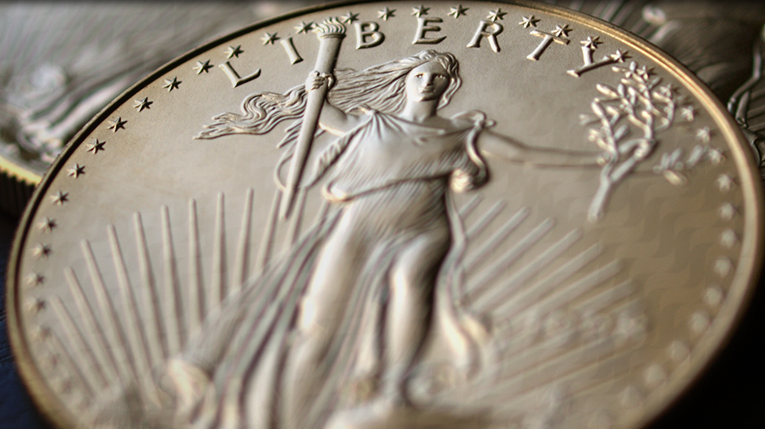
For about a month now I’ve been diving down the rabbit hole of history in the financial system from the 1750’s to the present in the United States. How could this have happened? This is the last thing I’d imagine myself doing. This is a topic that will immediately make your eyes glaze over.
Initially my motivation was to investigate the lawful meaning of “legal tender” and what it actually is represented by, its origin, and basically to find a modern definition. More specifically, I wanted to know if cryptocurrency could “…act like the U.S. Gold & Silver certificate of yesteryear once did" (Why Legal Tender, 2018). More or less, the paper dollars whose value was backed by real physical precious metal extracted from the land of the Earth.
Pictured is a gold certificate used from 1863 to 1933 (although there is the rare 1934 issue) in the United States as a form of paper currency.
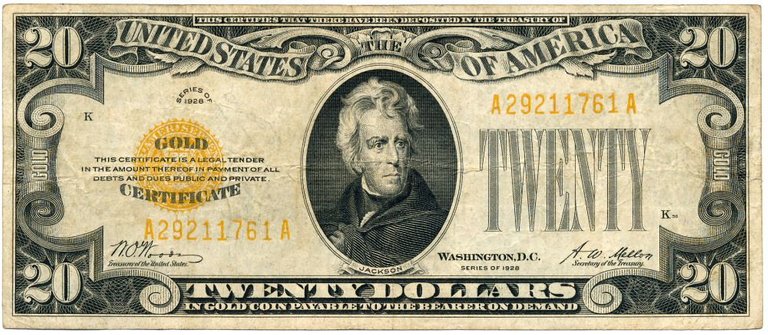
Securing Protection of Your Money
One company launching on July 4th, 2018 called Quintric is going to be on the Bitshares blockchain. It’s a digital currency literally backed by physical gold and silver. When you buy this cryptocurrency called Quint (gold) or QuintS (silver) a “…a corresponding amount of real, tangible, legal specie tender is then purchased and vaulted,” and stored on your behalf (Taggart, 2018). Well, there’s the first term most people will not know (if it wasn’t blockchain); specie. No, it’s not a type of Darwinian finch on the Galapagos. Specie is another word for “legal tender,” like coinage, paper notes, banknote, greenback, and dollars.
Unfortunately, my purpose to learn about legal tender quickly shuffled between many topics simultaneously, which was unexpected. I learned the term “legal tender” has a very narrow definition often given as “…any official medium of payment recognized by law that can extinguish public or private debt, or meet a financial obligation" (Taggart, 2018). In other words, anything that will be accepted in payment for debts, public charges, taxes, and dues.
But what about “legal tender” in the way people think of it in everyday life? Legal tender as paper dollar bills, or less commonly, gold and silver.
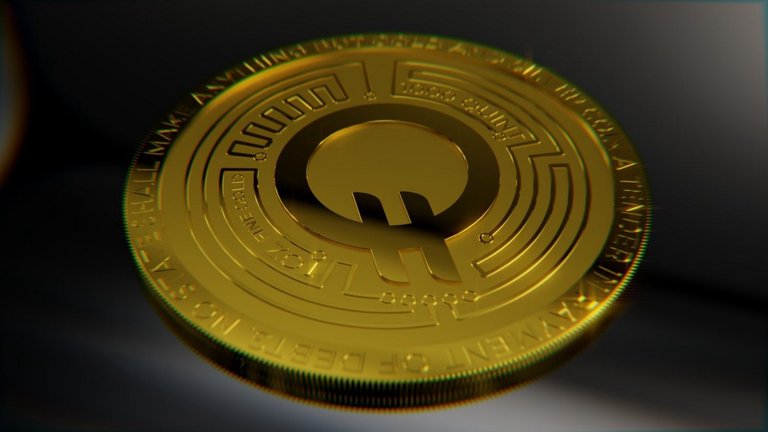
Before we really get into it I will share that I’m not an advisor nor am I an investor in Quintric. My views of digital precious-metal-backed currency are rather new, so I’m still doing my research before devoting my hard-earned income to this form of digital asset.
The United States Constitution
Once upon a time anyone could stash their money away in gold and silver and retain its value for decades, cashing in only when they reached retirement or there was a family emergency. Today’s global economy entices investors to become hypnotized for demanding that profits soar and dividends increase in price. Despite the copious number of financial products that exist in our modern day, many seasoned investors still turn to gold and silver as the safe-harbor for maintaining their wealth.
Buried deep in the belief about gold and silver is a solidarity and adherence to the United States Constitution which Article I Section 8 reads, in part; "The Congress shall have Power to...Coin Money, regulate the Value Thereof, and of foreign coin, and Fix the Standard of Weights and Measures."

Additionally, in Article II Section 10 of the Constitution it reads: "NO STATE shall...coin Money; emit Bills of Credit; make any Thing but gold and silver Coin a Tender in Payment of Debts."
In other words, Congress can coin the money as gold and silver but the STATES CANNOT make any coins or bills. STATES can ONLY USE gold and silver as legal tender.
Again, STATES DO have the permission and authority to use gold and silver as money and/or legal tender.
STATES DO NOT have the ability to print any paper money as legal tender.
"The power to make anything but Gold and Silver a tender in payment of Debts, is withdrawn from the States, on the same principle with that of issuing a paper currency" (Madison, 1788).
Many early founders of the United States of America preferred paper money to precious metals. As a result, paper money became legal tender in 1862. However, STATES could not print their own paper money. Please be aware of the large distinction between paper money and paper notes (banknotes). For example, paper money is backed by physical gold and silver and paper notes are nothing more than a representation of the debt the government is willing to take on, and it is not backed by anything of value.
Congress is the ONLY body which can regulate the value and they have the exclusive ability to determine what will be legal tender. Pursuant to that authority, Congress has declared that, "United States coins and currency (including Federal Reserve notes and circulating notes of Federal Reserve banks and national banks) are legal tender for all debts, public charges, taxes, and dues. Foreign gold or silver coins are not legal tender for debts” (Legal Tender, 1983).
Gold and silver coins are considered money (because they are made of precious metal) as well as a legal tender; while currency (paper notes and / or fiat) is only legal tender and NOT money as it once promised payment in redeemable precious metal.
Made by fiat means made by government. Legal tender currency is a promissory note ISSUED and BACKED by the US government that used to promise payment in gold or silver coins. In spite of fiat dollars acting as paper money, even the U.S. Treasury plainly exposes the following on their website:

Fiat money is made by government decree whereas real money is gold and silver and is forged in the Earth (ie. not connected to fiat).

How is Fiat Currency Created?
In the early 1980’s courts concluded paper notes have a constitutional basis including a central bank, and the Federal Reserve in particular. The court confirmed in Nixon v. Phillipoff (1985) that the United States Constitution gives CONGRESS the right to coin money, this includes fiat currency (e.g. paper notes).
How is fiat currency created? In current economic systems, fiat is created by two procedures.
First, by a central bank minting coins and printing paper banknotes. This type of legal tender currency is called narrow money, or M0, and is the normal everyday liquid mediums of exchange like coins, dollars, and balances held in your bank account. Second, bank money, or broad money (M1 / M2) is the money created by private banks through the recording of loans as deposits of borrowing clients. Currently, bank money is created as digital currency.

In most countries, the majority of currency is created as digital M1 / M2 by commercial banks making loans. However, contrary to some popular misconceptions, banks do not act simply as intermediaries, lending out deposits that savers place with them, and do not depend on central bank money (M0) to create new loans and deposits. Some of you may recognize this second type of currency as the application of the fractional reserve system.
A full-fledged digital world of crypto-economics is rapidly emerging and many businesses are taking the steps to align themselves with accepting digital currencies beyond normal legal tender. Today, virtual currencies and digital representations used as a store of value or medium of exchange are not recognized as legal tender, except in a couple countries.
If there comes a time we can pay for our groceries, utilities, our gas, or our taxes with crypto-currency and other digital assets; then we can move away from using Federal Reserve notes.
Digital Legal Tender and Smart Contracts
Here’s where we look at smart contracts! Just a few of the advantages using smart contracts are; transactions are often immutable, there can be complete trust between parties to an agreement, in many instances there’s automation in business, full transparency (and privacy), it removes human errors, and smart contracts exclude intermediaries.
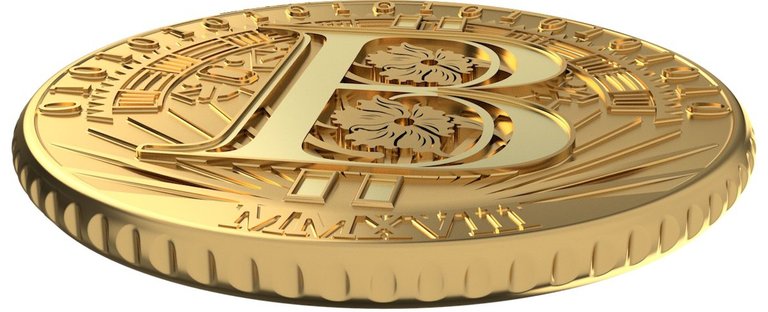
According to Nick Szabo, a pioneer of Bitcoin and legal scholar, a smart contract is “a set of promises, specified in digital form, including protocols within which the parties perform on these promises” (Szabo, 1996).
As described earlier in this article there can also exist smart contracts backed by lawful specie legal tender coins represented on the blockchain as tokens, essentially a certificate for gold or silver. One obstacle to the mass adoption of crypto-currency is how crucial it will be in the corporate sector where risks are higher and responsibilities larger for accepting or investing in digital currency to be fraudless and legal.
The Laws About Gold & Silver
Precious metals products are often beyond U.S. Securities and Exchange Commission (SEC) and Commodity Futures Trading Commission (CFTC) jurisdiction because federal regulatory authority was formalized in 1983 and 1984.
In those years many fraudulent companies were found to have been selling precious metals, primarily gold, through shady tele-marketing campaigns. Gold buyers nationwide were lured in with advertisements touting the firms' safe storage facilities and reputable brokers.
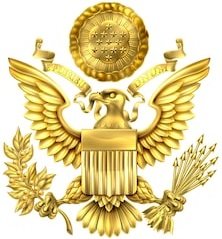
In the end hundreds of millions of dollars in investments cost over 50,000 people their hard-earned dollars. Selling non-existent Gold was the goal. Making outlandish claims and oral misrepresentations of twisted facts about the legitimacy of these "boiler rooms" triggered a massive SEC and CFTC crackdown.
The numerous gold schemes were following the Coinage Act of 1965 when silver was removed from legal tender coins such as dimes and quarters.
Then only a few short years later in 1971 President Nixon cancelled being able to convert dollars directly into gold, ending the agreement between 44 countries called Bretton Woods.
From Physical to Digital
Another way of stating the obvious, real money like gold was removed as the backing of the value for the existence of the US Dollar as its currency.
The outgrowth of scams and gold precious metals trading in the 1980's was born from a prolonged period where the public could not keep large amounts of gold or silver coin or bullion or currency.
Finally, in 1974 a bill from Congress legalized private ownership of gold and silver coins, bars and certificates, causing a multitude of new forms of precious metals investments. This is the same year the CFTC was formed.
Speculative and non-speculative gold and silver markets and commodities trading on exchanges regulated by the CFTC also opened the Futures markets and Options Contracts.
Then in 1983, in the wake of the gold and silver scandals, a Senate subcommittee investigated metals dealers to determine what regulatory system they fell under.
In one hilarious 1983 Chicago Tribune news story a best-selling author named Jerome F. Smith who wrote the book "The Coming Currency Collapse" was paid off by a Bullion Reserve to author a four-page opinion letter sent to over 90,000 precious metals investors stating without hesitation that they could fully trust the company. He put his name and reputation on the line with his endorsement and eventually the Federal Trade Commission uncovered over 200 instances when buyers did not receive their requested delivery of their metals.
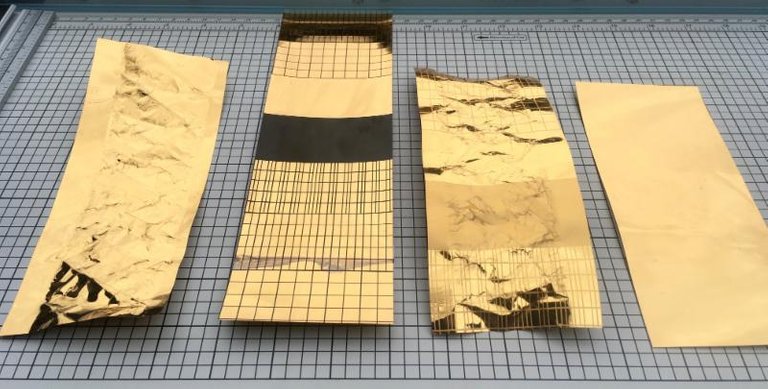
The SEC says precious metals themselves are not securities and that their trading does not require registration under the federal securities laws. The response of the SEC under the Securities Act of 1933 has held that when the purchase and sale of gold and silver with a recognized precious metals dealer happens then registration with the SEC will not be required.
In other words, precious metals investing is not considered to operate under regulations as a security, even if buyers are charged a percentage above "spot" prices and including storage, delivery, fabrication, vaulting, insurance, and certificates not designating a particular serial-numbered piece of bullion in the inventory.
To summarize, the SEC does not require metals dealers to register as a security and gives them the flexibility to offer their customers options for taking delivery of their precious metals or receiving a storage receipt or purchase certificate.
In fact, so many brokerage houses and banks wrote the SEC to request a "no-action letter" be issued stating the company was not a security, that the SEC released their own letter saying they would no longer respond to requests for no-action letters.
So long as the metals dealers do not give investment advice, and they generally act only as the purchase or sale agent they are safe from regulation. The agent performs "merely ministerial functions unrelated to the production of profits." (see Howey cases and "common enterprise").
Another important factor is no money from buyers of precious metals gets "pooled" for the purpose of investment.
Lastly, under the The Securities Exchange Act of 1934 the SEC advocates for the omission of any secondary trading markets between persons through metals dealers. This idea is the key in terms of regulation because when the ownership of metals is represented by a receipt or certificate there can be no secondary "market." A secondary market for metals is defined as buying or selling precious metals from or to a party other than the original source.
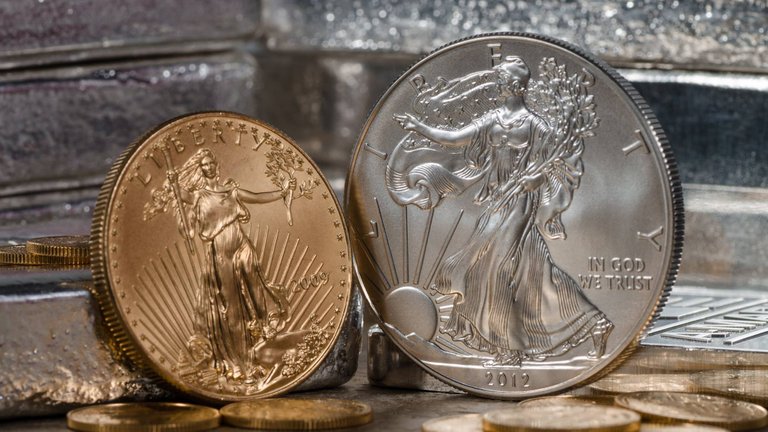
Metals firms may operate perilously close to the jurisdiction of the SEC and CFTC because if there exists a “common enterprise” any investors who may be led to believe by the metals dealer they can expect some profits, then this oversight may well turn a non-security into a security.
If the metals dealer also expects profits from their advising the precious metals investor they may be required to register as an Advisor because of The Investment Advisors Act of 1940.
Two Ways to Invest in Precious Metals
Method 1: Buy Gold & Silver at a fixed price and have it delivered in the postal mail (paying with a check)
a) Broker-dealers, banks, metal dealers, or futures commission merchants can act as intermediaries or agents for their customers in the purchase of precious metals
(1) A brokerage firm or bank may purchase gold or silver coins on behalf of the customers and charge a Premium over the “spot” price of the precious metals
Method 2: Buy Bullion at a negotiated price through a bank or broker-dealer and NOT have it delivered in the postal mail
a) The physical precious metals are represented by a certificate allowing the buyer to take legal title to a specified quantity of gold or silver bars
(1) The certificate entitles the buyer to immediate or future delivery of the bullion
(a) Once payment has cleared the delivery of the “certificate” to the buyer spells out the quantity of metal purchased (paying with a debit or credit card)
The broker-dealer will then set aside the precious metals within their inventory and store it for the buyer
The broker-dealer with then buy new precious metals in the cash markets or offset its liability in the futures market
Digital Legal Tender
Notice Method 2 above for investing in precious metals is using a “certificate” or "contract" and payment is often taking place digitally? Let’s now extend beyond the above examples to include the issuance of digital legal tender by the STATES, and if that's legal or not.
If a STATE cannot create printed notes then presumably the STATE cannot create its own currency no matter what form it takes as paper notes or crypto-currency? According to The Merkle, “…not everyone in the US is legally allowed to issue their own digital currency, regardless of what it is backed by” (Buntinx, 2018).
STATES may not have the authority to regulate cryptocurrencies because STATES cannot make currency, they can only allow legal tender as money in the forms of gold, silver, and as currency in the form of fiat dollars. Obviously the fiat dollars can also take the form of electronic or digital currency.
What this could mean is, if a STATE cannot issue anything other than money / legal tender gold or silver, then how would issuing a digital crypto-currency as a security or commodity be legal? Even moreso, how about an individual or company creating a new crypto-currency with no registration with the SEC? In nearly every case, if the backing of the digital currency is not legal tender then this begs the question; is it legal at all?
In conclusion, if a digital asset is not directly tied to a legal tender issued by Congress (through the Federal Reserve) or a State govenment, then it's issuance is subject to future regulation by these entities.
References
Buntinx, JP. (2018, March 15). New Stablecoins Backed by Gold and Silver Emerge. themerkle.com. Retrieved from https://themerkle.com/new-stablecoins-backed-by-gold-and-silver-emerge
Legal tender § 5103, 31 U.S. Code (1983).
Madison, J. (January 25, 1788). Restrictions on the Authority of the Several States From the New York Packet. New York Packet, Federalist No. 44. Retrieved from http://avalon.law.yale.edu/18th_century/fed44.asp
Taggart, M. (2018, March 12). Legal Tender, Precious Metals, and the Currency of the Future. Retrieved from https://medium.com/datadriveninvestor/legal-tender-precious-metals-and-the-currency-of-the-future-404efd363c6c
Taggart, M. (2018, April 29). So How Does Quint Work Anyway?. Retrieved from https://medium.com/datadriveninvestor/so-how-does-quint-work-anyway-ff106415a108
Why Legal Tender?. (2018). Retrieved from https://quintric.com/why-legal-tender
Great article Zack. I have to quibble with one small part of it: "specie" is not another word for legal tender. In this context, it means kind, type or category. But the examples of legal tender you provide - coins, dollars etc are good. This is Steven Jobe from Telegram, btw.
Yes, i was just opening rhe reader to new and more flexible ways to view money and currency.
The findings suggest NO cryptocurrency token is legal, because only the Federal Reserve and US Treasury in collaboration with Congress has any legal possibility to create ANY currency. By default this makes ALL cryptocurrencies illegal because companies at the state level cannot issue currencies. However, if the company is "overseas" then I don't think the same rules apply. Except of course if the crypto-currency sells to US citizens on the open market. Bottom line, based on my research there is NO legal cryptocurrency yet. Not Bitcoin, Not Ethereum, not Quintric...NONE!
Since the face value of some U.S.-minted gold and silver coins -- like the one-ounce, $50 American Gold Eagle coin -- is so much less than the metal value (one ounce of gold is now worth more than $1,700), some new sound money laws allow the coins to be exchanged at their market value, based on weight and fineness.
However, as Republican Senator Richard Shelby of Alabama says, “We live in a virtual world ... it’s not my world, we started out in pencil and paper.”
So if we are talking about sound money using gold and silver coins considered legal tender based on metal values another issue pops up. The issue is people aren't going to walk around with such valuable coins in their pockets.
Eventually we will be urged to use electronic depositories and accounts for the coins to make transactions easier making us use debit cards linked to gold holdings. Physical gold and silver coins would be transferred between accounts in privately-owned depositories (or vaults) based on the market value of the metals.
Congratulations @zackcovell! You have received a personal award!
Click on the badge to view your Board of Honor.
Do not miss the last post from @steemitboard!
Participate in the SteemitBoard World Cup Contest!
Collect World Cup badges and win free SBD
Support the Gold Sponsors of the contest: @good-karma and @lukestokes
UPDATE: this article was published on the @Quintric newsroom page. https://quintric.com/newsroom/2018/6/15/facts-about-the-digital-economy-everyone-thinks-are-true-or-are-they
Quintric Cryptocurrency Backed by Legal Tender American Gold and Silver Eagles and Buffalos Listed on Nasdaq's Netcoins (NETC)
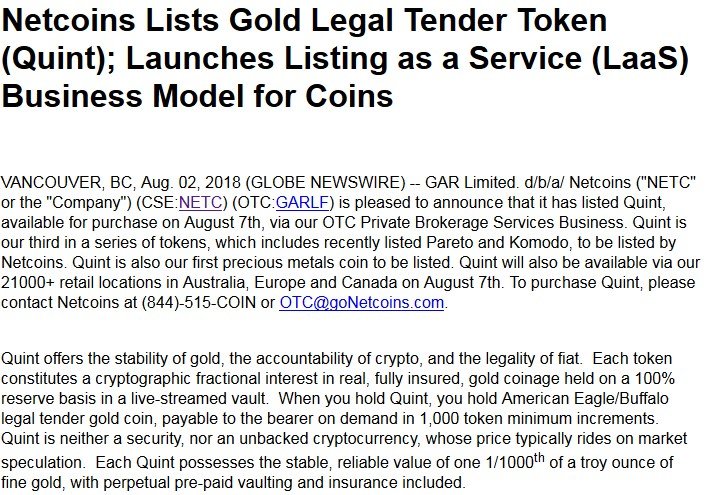
https://steemit.com/quintric/@zackcovell/quintric-cryptocurrency-backed-by-legal-tender-american-gold-and-silver-eagles-and-buffalos-listed-on-nasdaq-s-netcoins-netc